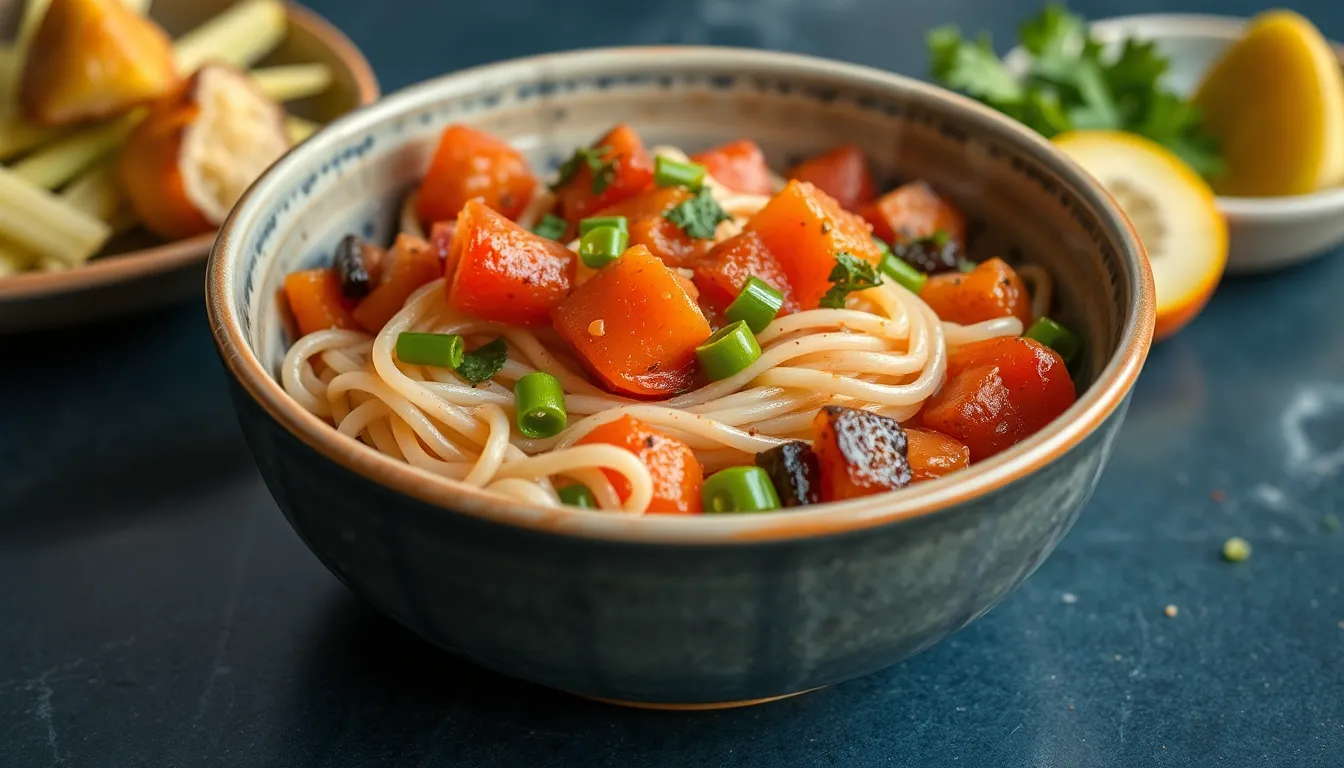Blanching 101: How to Get Your Veggies Ready for Stir-Frying
Introduction
Blanching is a fundamental cooking technique that many home cooks overlook, yet it plays a crucial role in preparing vegetables for a variety of dishes, especially stir-frying. In its simplest form, blanching involves briefly boiling vegetables and then shocking them in ice water. This technique not only enhances the color and texture of the veggies but also preserves their nutrients, making them a healthier choice.
The purpose of this article is to provide you with a comprehensive guide on how to blanch your vegetables effectively. Whether you’re looking to enhance your stir-frying skills or simply want to improve your overall cooking technique, this guide will set you on the right path.
What is Blanching?
The blanching process involves immersing vegetables in boiling water for a short period, followed by rapidly cooling them in ice water. This technique serves multiple purposes:
- Enhances color and texture: Blanching helps to preserve the vibrant colors of vegetables and gives them a crisp texture, perfect for stir-frying.
- Preserves nutrients: By cooking vegetables for a short time, blanching helps to retain more nutrients compared to prolonged cooking methods.
- Reduces cooking time: Pre-blanching vegetables allows them to cook faster during stir-frying, ensuring they remain tender yet crunchy.
When to Blanch Vegetables
Not all vegetables require blanching, but many benefit significantly from the process. Here are some common vegetables that lend themselves well to blanching:
- Broccoli
- Carrots
- Green beans
- Bell peppers
- Asparagus
- Spinach
Blanching is particularly useful in the following situations:
- Preparing for freezing: Blanching stops enzyme actions that can cause loss of flavor, color, and texture.
- Enhancing flavor and texture: It brings out the best in vegetables by softening them slightly and enhancing their natural colors.
- Prepping for stir-frying: It ensures that your vegetables cook evenly and quickly in the stir-fry process.
The Blanching Process
Step-by-Step Instructions
- Gather your ingredients and tools:
- Large pot for boiling water
- Ice bath (bowl filled with ice and water)
- Slotted spoon or strainer
- Cutting board and knife
- Prepare the vegetables: Wash your vegetables thoroughly to remove dirt and pesticides. Cut them into uniform sizes to ensure even blanching.
- Boil water: Use a large pot to ensure the water returns to a boil quickly after adding the vegetables. Salt the water generously for added flavor.
- Blanch the vegetables: Place the vegetables in boiling water for the recommended time (see table below).
- Shock in ice water: Immediately transfer the blanched vegetables to the ice bath using a slotted spoon. This stops the cooking process and helps retain their vibrant color.
- Drain and store: Once cooled, drain the vegetables well and dry them gently with a kitchen towel before storing.
HTML Table: Recommended Blanching Times for Various Vegetables
| Vegetable | Blanching Time (Minutes) | Additional Tips |
|---|---|---|
| Broccoli | 2-3 | Cut into florets |
| Carrots | 2-3 | Slice into thin rounds |
| Green Beans | 3-5 | Trim ends |
| Bell Peppers | 2-3 | Remove seeds and stems |
| Asparagus | 2-4 | Cut off tough ends |
| Spinach | 1-2 | Remove stems |
Tips for Perfectly Blanched Vegetables
To achieve the best results when blanching your vegetables, consider the following tips:
- Use fresh, high-quality vegetables: The fresher the produce, the better the result.
- Don’t overcrowd the pot: Blanching in small batches allows for even cooking and better results.
- Maintain a rolling boil: Ensure the water is at a high boil before adding vegetables to avoid them becoming mushy.
- Adjust blanching time based on vegetable size: Larger pieces may require longer blanching times.
Storing Blanched Vegetables
Proper storage of blanched vegetables is essential to maintain their quality:
- Short-term storage: Store blanched vegetables in the refrigerator for up to 5 days in an airtight container.
- Long-term storage: For freezing, lay the blanched vegetables flat in a single layer on a baking sheet until frozen, then transfer them to freezer bags or containers.
- Best practices for freezing: Remove as much air as possible from freezer bags to prevent freezer burn.
Incorporating Blanched Veggies in Stir-Frying
Blanched vegetables add a delightful crunch and vibrant color to your stir-fry dishes. Here are some of the best stir-fry recipes featuring blanched vegetables:
- Chicken and Broccoli Stir-Fry: Pair blanched broccoli with chicken, garlic, and soy sauce for a classic dish.
- Vegetable Fried Rice: Mix blanched carrots, peas, and bell peppers into fried rice for added texture and color.
- Beef and Asparagus Stir-Fry: Combine blanched asparagus with tender strips of beef and a savory sauce.
When combining blanched vegetables with other ingredients, keep the following tips in mind:
- Add blanched veggies towards the end of cooking to maintain their crunch.
- Season lightly, as blanched vegetables often have an enhanced natural flavor.
Conclusion
Blanching is an essential technique that elevates your cooking game, especially when it comes to preparing vegetables for stir-frying. By enhancing the color, texture, and nutrient retention of your veggies, blanching is a step you won’t want to skip. With this guide, you’re equipped to experiment with different vegetables and discover new flavors in your dishes.
We invite you to share your blanching experiences in the comments section. What vegetables do you love to blanch? How do you incorporate them into your meals?
Call to Action
If you enjoyed this article and want to learn more cooking tips and techniques, be sure to subscribe to our blog for regular updates. Share this article with fellow cooking enthusiasts and help others discover the joys of blanching!




